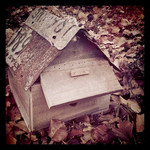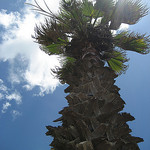 We recently blogged about the benefits of tree removal. Sometimes it’s simply a necessity. But then what? As we all try to do our part to reduce, reuse and recycle, sometimes what we need to do is upcycle. Take that downed tree, and do something decorative with it. Here are five ideas:
We recently blogged about the benefits of tree removal. Sometimes it’s simply a necessity. But then what? As we all try to do our part to reduce, reuse and recycle, sometimes what we need to do is upcycle. Take that downed tree, and do something decorative with it. Here are five ideas:
- Mulch. Not every species of tree will make good mulch, but the ones that do will keep your tree in your very own yard, adding to the landscaping and beauty. After the Christmas holidays, many cities will accept Christmas trees, turning them into mulch to sell back to the community. Check your city government’s website for details.
- Firewood. Again, not every tree will make ideal firewood. When we help with tree removal, we’re happy to help you determine what trees would make the best firewood for use in your home.
- Coasters/trivets. If you’re feeling really crafty, you can slice small branches into coasters and larger branches into trivets for use in your kitchen and dining room. A simple stain or varnish and some felt on the bottom will help them last and protect your furniture.
- Wildlife/bird habitat. Neighbors might not appreciate a random pile of branches in your front yard, but a couple of well places branches and tree trunks in the backyard might make an ideal environment for birds and wildlife.
- Woodworking. Does your father-in-law dabble in woodworking like mine does? He can take an old, dried out tree branch and turn it into a beautiful window planter or birdhouse. Again, not all tree species are ideal for woodworking projects, but the right ones create beautiful projects.
If you have questions about tree removal or recycling — make that upcycling — your trees, feel free to give us a call. We’re always happy to help.

 It’s been said that a house isn’t a home without a dog. One might also be able to say that a house isn’t a home without a perfect shade tree in the yard.
It’s been said that a house isn’t a home without a dog. One might also be able to say that a house isn’t a home without a perfect shade tree in the yard. We love our trees. They provide shade, filter the air and create homes for birds and wildlife. They line the path along many of the journeys we take in life, and they even provide scenery in our memories. I can remember the tree-lined drive out to my grandfather’s ranch as if I were just there yesterday — I loved feeding the goats with him once we got there. And I probably haven’t made that drive in more than 20 years.
We love our trees. They provide shade, filter the air and create homes for birds and wildlife. They line the path along many of the journeys we take in life, and they even provide scenery in our memories. I can remember the tree-lined drive out to my grandfather’s ranch as if I were just there yesterday — I loved feeding the goats with him once we got there. And I probably haven’t made that drive in more than 20 years. The summer months are perfect for many things: Enjoying time at the beach. Sleeping late when school is out. Eating a snow cone before it has time to melt. But the summer months are not good for adding new trees and plants to your landscaping.
The summer months are perfect for many things: Enjoying time at the beach. Sleeping late when school is out. Eating a snow cone before it has time to melt. But the summer months are not good for adding new trees and plants to your landscaping. When disaster strikes in the form of damaging spring and summertime weather, it seems that fly-by-night businesses try to make a buck on the misfortune. All too often, our news hours following a storm are filled with stories of roof-repair and tree-service companies that take way too much money from customers and never deliver a service. People like that give all the businesses in their industry a bad name.
When disaster strikes in the form of damaging spring and summertime weather, it seems that fly-by-night businesses try to make a buck on the misfortune. All too often, our news hours following a storm are filled with stories of roof-repair and tree-service companies that take way too much money from customers and never deliver a service. People like that give all the businesses in their industry a bad name.